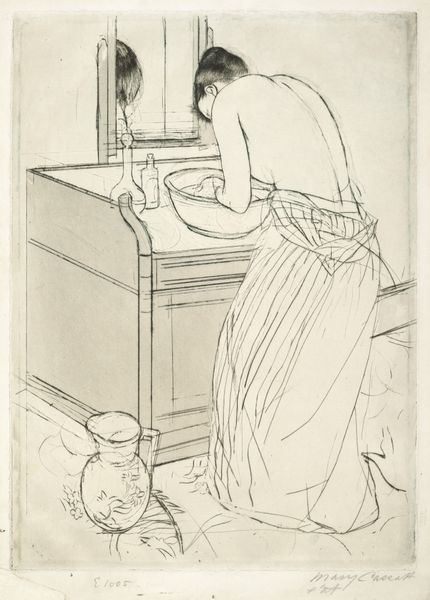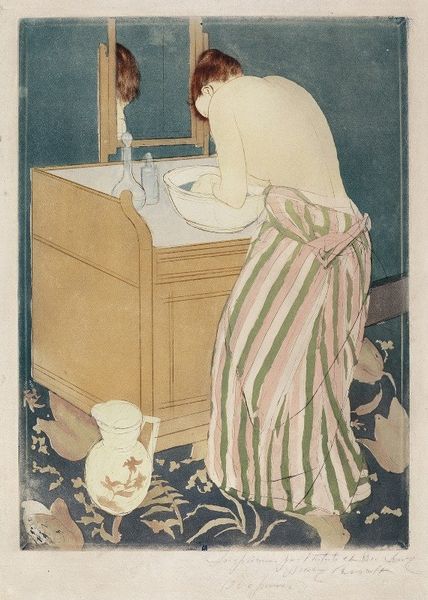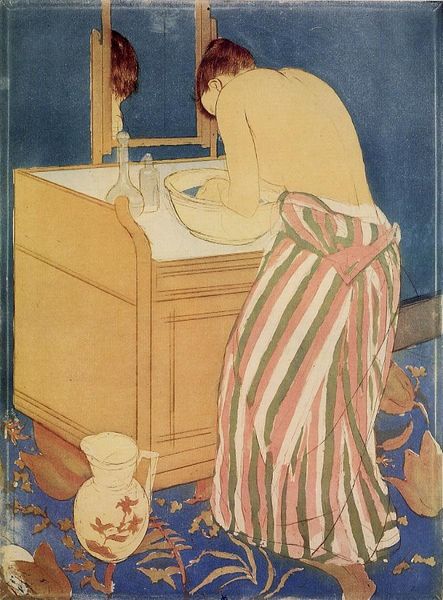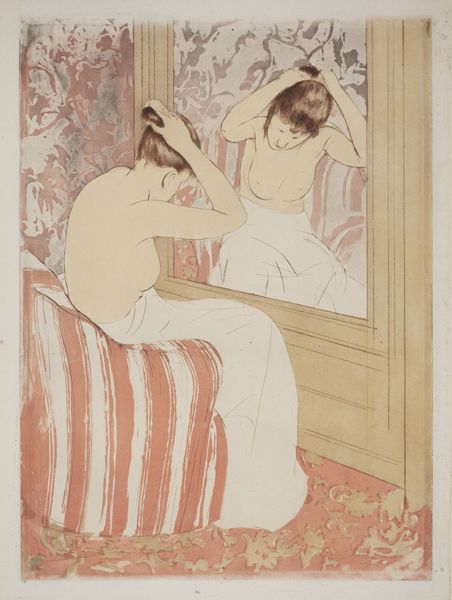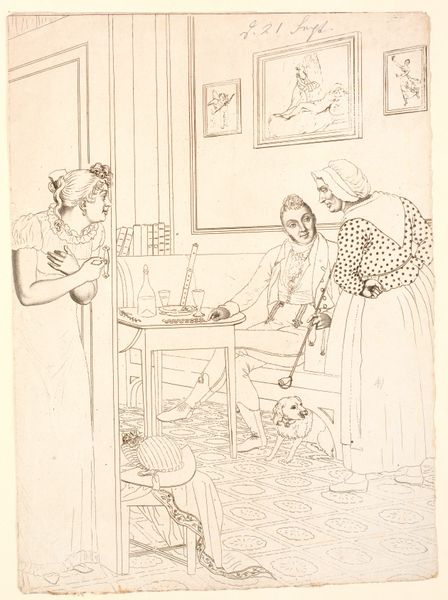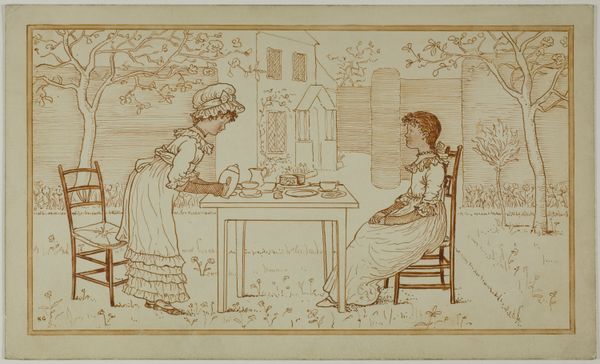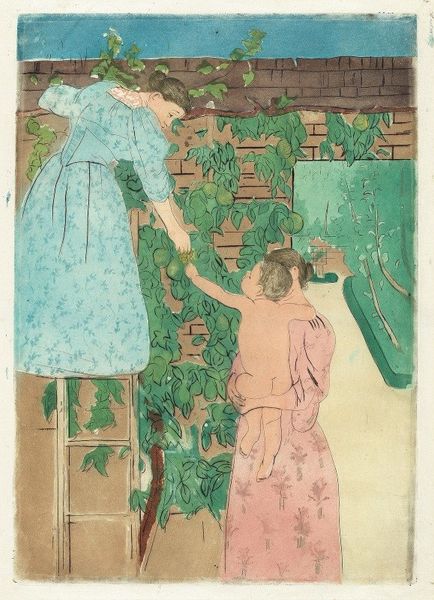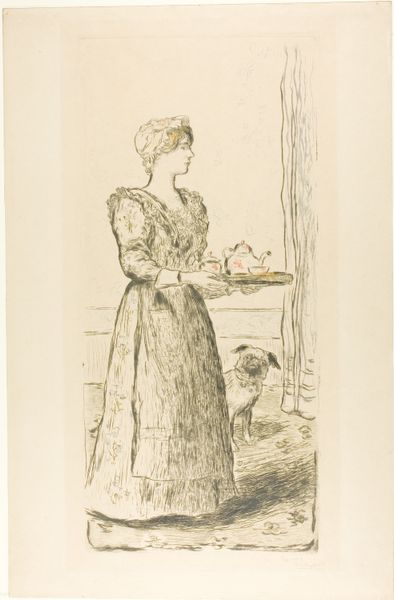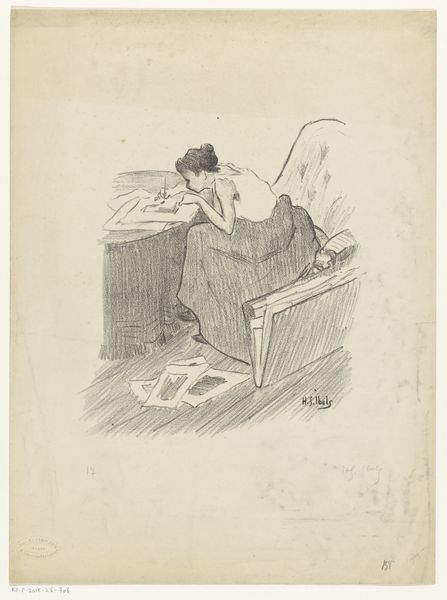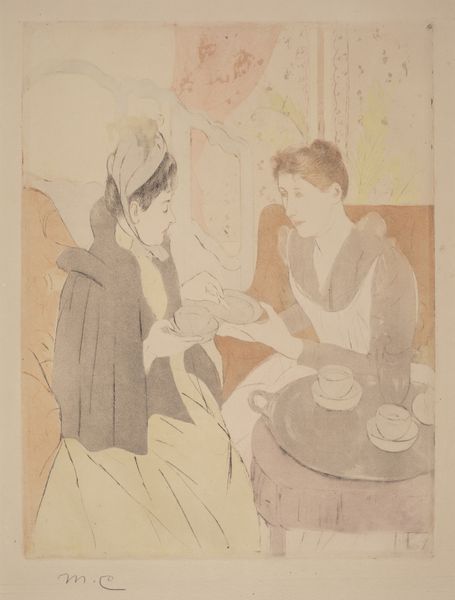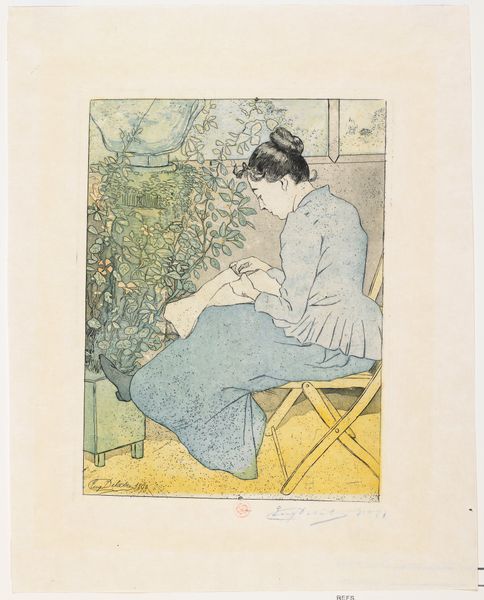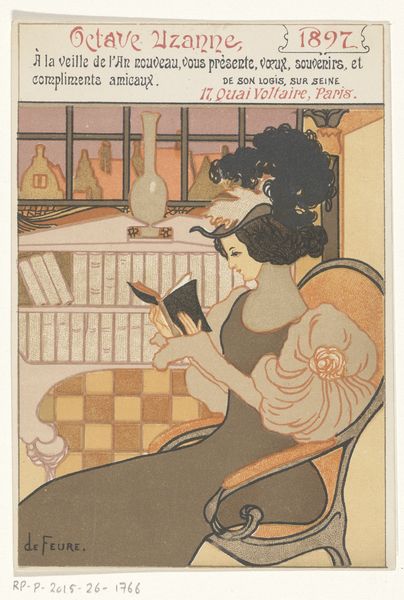
drawing, print, pencil
#
drawing
# print
#
impressionism
#
pencil drawing
#
pencil
#
genre-painting
#
nude
#
watercolor
Dimensions: plate: 36.83 × 26.35 cm (14 1/2 × 10 3/8 in.) sheet: 42.3 x 30.5 cm (16 5/8 x 12 in.)
Copyright: National Gallery of Art: CC0 1.0
Editor: So, this is Mary Cassatt's "Woman Bathing" from around 1890 or 1891. It’s a print, primarily using pencil and some watercolor. There’s something so intimate about this scene. The woman seems completely absorbed in her ablutions, but what I find intriguing is its perspective within its socio-historical environment; what do you see in this piece from that standpoint? Curator: It's crucial to understand that Cassatt, as a woman artist in the late 19th century, had limited access to the same spaces and subjects as her male Impressionist counterparts. So, she frequently depicted women in domestic settings and everyday activities. This piece offers a glimpse into the private world of women, a realm often ignored or romanticized by male artists of the time. Editor: That makes sense. It feels like she's trying to capture a sense of the real, rather than some idealized version of womanhood. Is it perhaps also making some quiet claim of representation? Curator: Precisely. This portrayal is striking because of its stark ordinariness. The print challenges traditional representations of the female nude in art, where women were typically portrayed as objects of male desire. This is a moment of self-care, of private reflection, and not one meant for public consumption or admiration. She's washing! This also links her work, culturally, to an orientalizing aesthetic. Editor: Interesting. So, you’re saying that while Cassatt couldn't access some spaces and subjects, she could use these themes as points of departure for commentary on them. Curator: Exactly. The artist's perspective challenges societal expectations and constraints placed upon women in art. It forces the viewer to confront what is often unseen and unacknowledged in the artistic canon. By reclaiming control over her artistic subjects, Cassatt pushes for a new discourse in how we view the art world in relation to those left out of it. Editor: I see how much this reveals not just about her work, but the cultural dynamics around art creation in the late 19th century. Curator: And perhaps how some things have and have not changed. Thanks for pointing me to this artwork today.
Comments
No comments
Be the first to comment and join the conversation on the ultimate creative platform.
